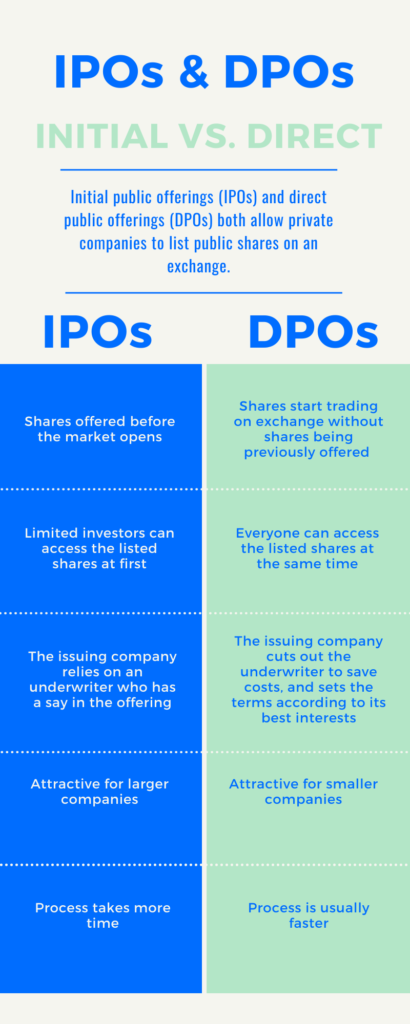
How to Invest in IPOs

An initial public offering (IPO) is the moment when a company “goes public” – allowing investors to buy its stock on a stock exchange for the first time. IPOs for large companies are often hotly anticipated, because investors often feel that the value of a stock will increase rapidly during and immediately after an IPO.
In some cases, this happens, and investors who bought stock early can make a healthy return. In some other cases, an IPO doesn’t live up to the hype, and early investors can lose a lot of money. In this article, we’ll help you to avoid that second income by running through everything you need to know about investing in IPOs.
What is an Initial Public Offering (IPO)?
First, the basics. In order to “go public” in the US, a company must first register with the Securities and Exchange Commission (SEC), and fill out a number of forms. Typically, they will then list stocks on a major exchange, such as the New York Stock Exchange (NYSE) or Nasdaq.
Sometimes, a company will invite investors to buy stock before their “full” IPO. In other cases, a company will go straight to a fully public IPO, and allow anyone to buy their stocks directly from the exchange. In either case, in order to participate in an IPO, an investor must purchase shares as they become available.
IPOs vs. DPOs vs. SPACs
The terminology around IPOs can be a little confusing, because there are several ways in which this can be done. Three of the most common are IPOs, DPOs, and SPACs.
The primary difference between an IPO and a DPO is that initial public offerings (IPOs) use a broker, while direct public offerings (DPOs) offer a more direct approach. Both, however, are ways in which companies can sell shares for any reason. In an IPO, shares are offered to investors before the market opens, whereas with a DPO shares start trading on an exchange with no previously issued shares. With an IPO, the issuing company generally relies on an underwriter to reduce risk; in a DPO, the underwriter is cut out to save costs.
Check the differences between IPOs and DPOs in the chart below:

A special acquisition (SPAC) fund is a more unusual approach. A SPAC is a company in the developing stage—with no real business plan other than to engage in a merger or acquisition within a specific time frame. It’s essentially a pool of funds created to buy another company (similar in fashion to many private equity funds). SPACs can be profitable, but are also risky.
The Benefits of IPO Stock
Investing in an IPO is attractive for many investors, because it’s a great way to get in on the “ground floor” of a newly public company. If the company goes on to be a success, investors can make huge returns for a relatively modest initial investment. Even the income generated in dividends over a few decades can be larger than the investment amount.
Another attractive feature of buying IPO stock is that you can buy up a significant portion of a private company at a relatively low price. Over time, and if the company succeeds, it won’t only be that your stock increases in price – further stock offerings may mean that you end up with more shares as well.
Finally, IPOs can offer a great opportunity for the knowledgeable investor because private companies don’t receive the analyst attention that public companies do. If you have expertise in a particular sector, and believe you can spot a company with great potential before stock analysts can, investing in their IPO can be a great way to beat the market.
The Downsides of IPO Stock
As with any investment, IPO stock also has some downsides. The biggest of these is price volatility. Often, in the first few weeks (months, or even years) of a company being public, it can be very difficult to work out what it is actually worth. This means that any news about a company – good or bad – can send prices spiralling up or down.
Plenty of investors, but particularly those new to stock trading, will get spooked when prices suddenly drop in this way. They will sell the stock that they purchased at the IPO of the company, only to see it later regain its value. This is the primary risk for IPO investment, and the way in which the majority of people lose money with these types of stock.
To avoid this issue, it’s important to understand the difference between market price and the intrinsic value of a company. Many novice investors believe that the stock price of a company is a good guide to its intrinsic worth, but this is not always the case.
The Bottom Line
The particular risks of buying IPO stock should not necessarily deter investors from it. Instead, investors should make sure to perform their due diligence on any IPO stock they are interested in buying. When looking at IPO stock, ask yourself a few key questions:
- If this business does not grow at a high enough rate to justify its price, what is the likely reason? What are the probabilities of those failures occurring?
- What are the competitive defenses that protect the business? Are there patents, trademarks, key executives, or some other unique factor protecting it?
- What is stopping some other firm from coming in and destroying the attractive economics?
If you know enough about an economic sector that you can assess these factors in relation to a particular company, IPO stock can be a great investment. If you do not, make sure you do your research before buying into a potentially risky investment.




